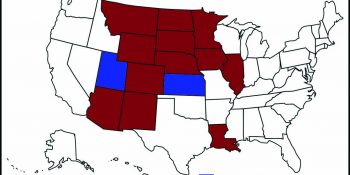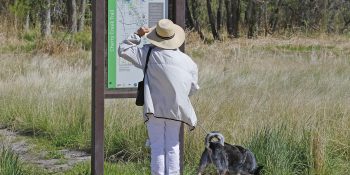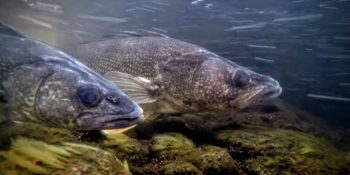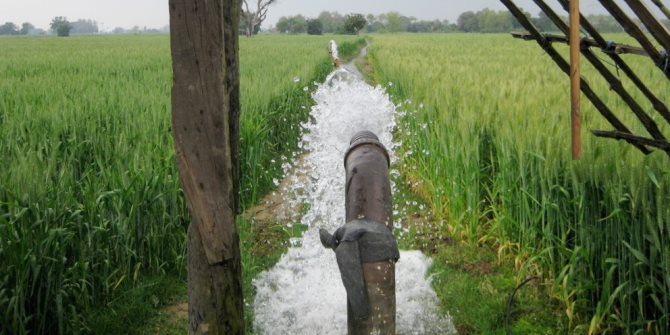DENVER — Dish Network will locate its new wireless headquarters with at least 2,000 full-time employees in Colorado and T-Mobile will significantly build out a statewide 5G network, particularly in rural areas, under agreements the Colorado Attorney General’s office announced today. The companies agree to pay up to a total of $100 million if they fail to meet these commitments.
Because of the substantial benefits that Coloradans will gain from these commitments, the Attorney General’s Office will end its participation in a multistate lawsuit it joined in June to halt the T-Mobile and Sprint merger. The U.S. Justice Department recently approved the $26.5 billion merger, in which Dish agreed to acquire the companies’ prepaid businesses and get access to T-Mobile’s network for $5 billion, making it the fourth largest nationwide wireless carrier.
“The State of Colorado joined a multistate lawsuit to block the T-Mobile-Sprint merger because of concerns about how the merger would affect Coloradans. The agreements we are announcing today address those concerns by guaranteeing jobs in Colorado, a statewide buildout of a fast 5G network that will especially benefit rural communities, and low-cost mobile plans,” said Chief Deputy Attorney General Natalie Hanlon Leh. “Our announcement today ensures Coloradans will benefit from Dish’s success as a nationwide wireless competitor.
Under an agreement with Dish, the company will locate and maintain its wireless headquarters at its Riverfront facility in Littleton for at least seven years. The company will also employ a minimum of 2,000 full-time employees working primarily on wireless at Dish facilities in Colorado including Riverfront, and their Inverness and Meridian facilities in Englewood. In addition, Colorado will be among the first ten states where Dish plans to deploy 5G broadband services by 2023. Dish faces up to $20 million in penalties if it does not meet its commitments to the state.
In a separate agreement with T-Mobile, Coloradans will benefit from improved 5G coverage in the state, especially in rural areas. The New T-Mobile has agreed to the following commitments:
Statewide Network Build Commitment:
- Within three years of the closing date of the merger, New T-Mobile will deploy a 5G network in Colorado with at least 68 percent of the Colorado population having access to download speeds equal to or greater than 100 Mbps, and at least 76 percent of the Colorado population having access to download speeds equal to or greater than 50 Mbps.
- Within six years of the closing date, New T-Mobile will deploy a 5G network in Colorado with at least 92 percent of the Colorado population having access to download speeds equal to or greater than 100 Mbps, and at least 93 percent of the Colorado population having access to download speeds equal to or greater than 50 Mbps.
Rural Network Build Commitment
- Within three years of the closing date, New T-Mobile will deploy a 5G network in Colorado with at least 60 percent of the Colorado rural population having access to download speeds equal to or greater than 100 Mbps, and at least 63 percent of the Colorado rural population having access to download speeds equal to or greater than 50 Mbps.
- Within six years of the closing date, New T-Mobile will deploy a 5G network in Colorado with at least 74 percent of the Colorado rural population having access to download speeds equal to or greater than 100 Mbps, and at least 84 percent of the Colorado rural population having access to download speeds equal to or greater than 50 Mbps.
Low-Price Mobile Plan Commitment
- For at least five years following the closing date, New T-Mobile will offer new low-priced plans in the state that are available to all customers and provides:
- Unlimited talk, text, and 2GB of data for $15 or less per month; and
- Unlimited talk, text, and 5GB of data for $25 or less per month.
T-Mobile faces up to $80 million in penalties if it fails to meet its commitments to the state.
Hanlon Leh, Solicitor General Eric Olson, and attorneys from the Colorado Department of Law’s Consumer Protection Section negotiated the agreements with Dish and T-Mobile. Attorney General Phil Weiser recused himself from the matter.
SPREAD THE NEWS
COMMENT, Like, Follow & SHARE @I70Scout
CURRENT EDITION
WEATHER & TRAFFIC PUZZLES RECENT NEWS ADVERTISE WITH US








